Hi there! I’m Michael Zhang, a passionate explorer with years of international travel experience. I love diving deep into the history and culture of the places I visit, especially when it comes to discovering hidden gems through in-depth travel. Today, I’ll take you to Laoshan Mountain, also known as the “Number One Mountain on the Sea” in China. Whether you’re a hiking enthusiast, a history lover, or simply someone who enjoys the beauty of nature, Laoshan promises to leave you with unforgettable memories. Let’s get started!
Summary
Introduction to Laoshan Mountain
Laoshan Mountain, historically known by several names like Láo Mountain, Lóu Mountain, and Áo Mountain, is one of China’s most renowned coastal mountains. It holds the title of the highest peak along China’s coastline and is often referred to as the “First Famous Mountain by the Sea.” Spanning a total area of 446 square kilometers, Laoshan is a 5A-rated national tourist attraction. The mountain features a gradually sloping terrain from east to west, with its main peak, Jufeng (also known as Laoshan Peak), standing at 1,132.7 meters above sea level and covering an area of approximately 1.5 square kilometers at its summit.
- Location: Laoshan District, Qingdao City, Shandong Province (Apple Maps/Amap)
- Opening Hours:
- April to October: 6:00 AM – 7:00 PM
- November to March: 7:00 AM – 5:00 PM
- Recommended Visit Duration: 1–2 days
- Best Seasons to Visit: Laoshan is enjoyable year-round, but spring and autumn are particularly recommended for their pleasant weather, perfect for hiking and sightseeing.
- Ticket Purchase: Trip.com Discounts
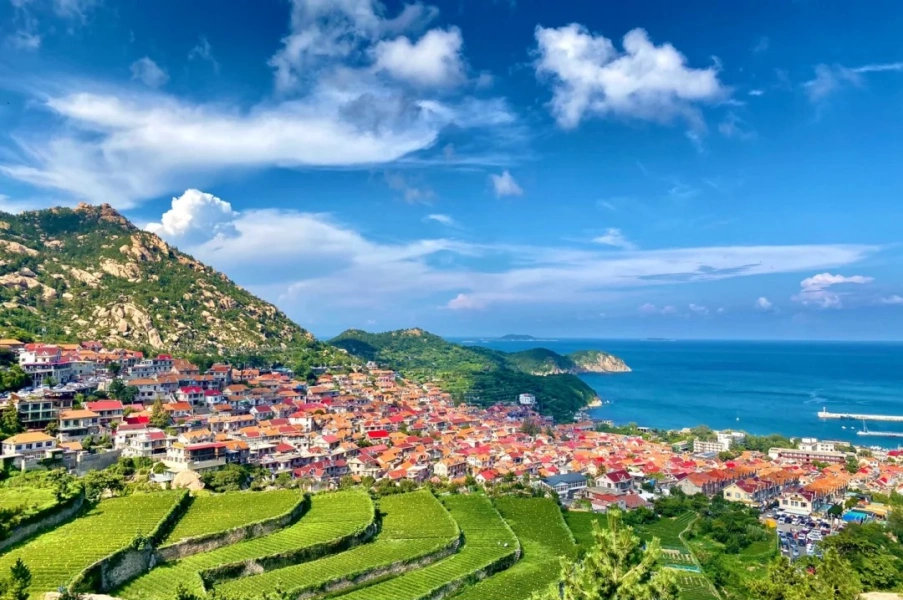
Laoshan Map
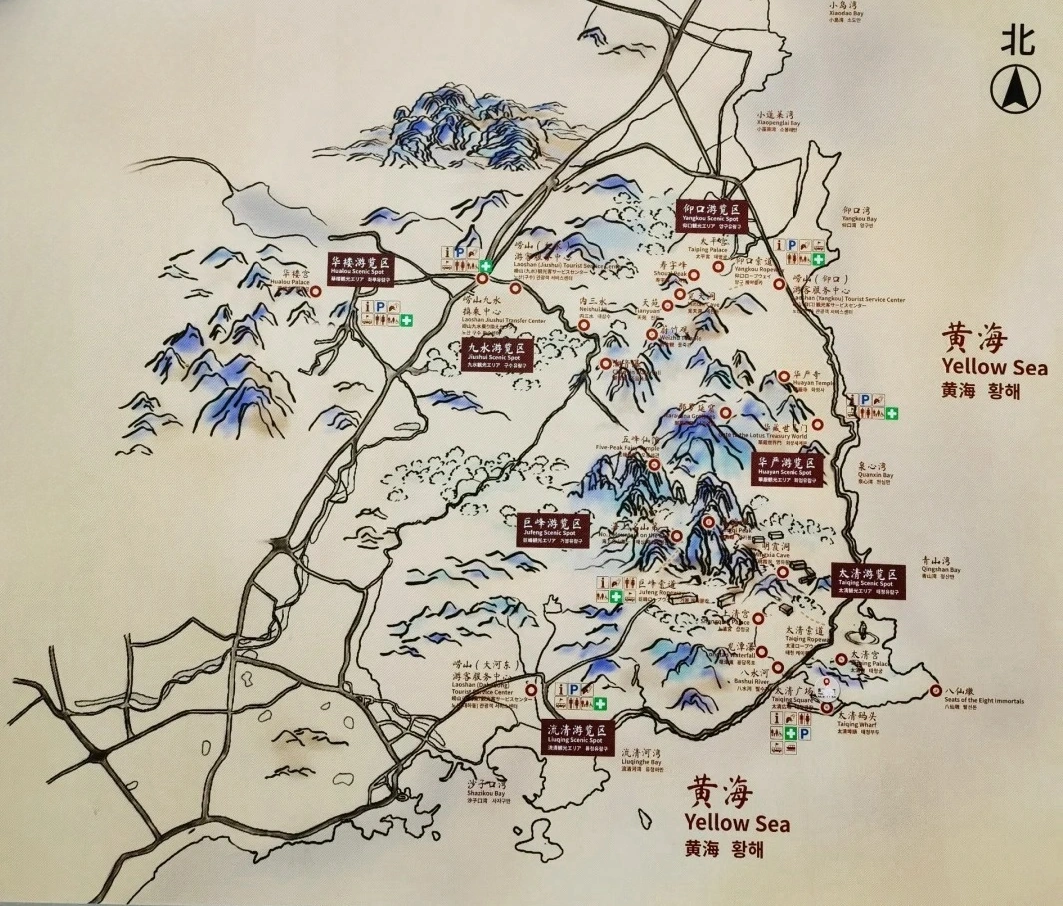
Why Visit Laoshan Mountain?
Stunning Natural Beauty
Laoshan Mountain is renowned for its breathtaking peaks, unique rock formations, crystal-clear streams, and cascading waterfalls. The scenery changes dramatically with each season: spring brings blooming flowers, summer offers lush greenery, autumn features vibrant red leaves, and winter creates a snowy wonderland. Additionally, Laoshan’s proximity to the coast provides an 87-kilometer shoreline, dotted with picturesque beaches and bays. Visitors can marvel at the mesmerizing interplay of blue seas, azure skies, and rolling clouds.
Rich History and Cultural Significance
Laoshan is not only a treasure trove of natural beauty but also a hub of cultural heritage. The mountain is home to several ancient temples and Taoist sites, such as Taiqing Palace and Shangqing Palace. These architectural marvels showcase the artistry of ancient Chinese craftsmanship and highlight the significance of Taoist culture in China’s history. As one of the birthplaces of Taoism, Laoshan holds great religious importance, making it a revered site for pilgrims and spiritual seekers.
Things to Do in Laoshan Mountain
Major Scenic Areas
Taiqing Scenic Area
The Taiqing Scenic Area is one of the most historically and culturally significant zones of Laoshan Mountain. Renowned for its deep Taoist heritage and ancient architecture, this area offers visitors a unique blend of spiritual exploration and natural beauty. With Taiqing Palace and Shangqing Palace as its central attractions, the area draws countless history enthusiasts and religious pilgrims.
Shangqing Palace
Shangqing Palace, also known as the Upper Palace, is located in a serene valley on the southeastern slope of Laoshan. It features two main courtyards and a side yard with a total of 28 rooms, covering approximately 1,000 square meters. The palace is aligned from south to north along a central axis, with structures including the gate, the main hall, and the rear hall.
- Front Hall: Dedicated to the Three Pure Ones.
- Rear Hall: Houses the Jade Emperor.
- Side Halls: Enshrines the “Three Officials” and the “Seven Immortals.”
Shangqing Palace is a tranquil retreat that offers visitors a peaceful environment to immerse themselves in history and spirituality.
Taiqing Palace
Taiqing Palace, known locally as the Lower Palace, is situated on the southern slope of Laoshan. It is the largest and oldest Taoist temple in the area, covering over 30,000 square meters with a building area of 2,500 square meters. The palace includes more than 150 rooms, divided into three main halls: the Hall of Three Officials, Hall of Three Pure Ones, and Hall of Three Sovereigns.
As the second-largest Taoist monastery in China after Beijing’s Baiyun Temple, Taiqing Palace is a must-visit for those interested in Taoist culture.
- Additional Ticket: 27 RMB
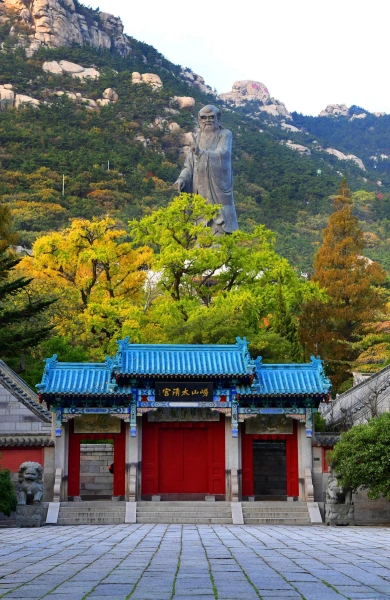
Yangkou Scenic Area
The Yangkou Scenic Area is a unique coastal zone where the mountains meet the sea. Known for its stunning natural landscapes and Taoist cultural sites, this area is perfect for visitors who want to experience both hiking and ocean views. Yangkou boasts dramatic peaks and breathtaking sea views, with plenty of hiking trails and landmarks to explore.
Taiping Palace
Situated at the foot of the mountains near Yangkou Bay, Taiping Palace was originally named “Upper Garden Palace” in honor of imperial recognition. Surrounded by striking cliffs, this site offers a prime location for sunrise viewing, ocean breezes, and scenic relaxation.
Lion Peak
Lion Peak, northeast of Taiping Palace, is a massive rock formation that resembles a crouching lion gazing at the sea. At the summit, visitors can find an inscription from the Ming Dynasty reading “Marvelous View of Mountains and Sea.” A lion-shaped cave near the peak can accommodate over ten people, adding to the allure of this iconic spot.
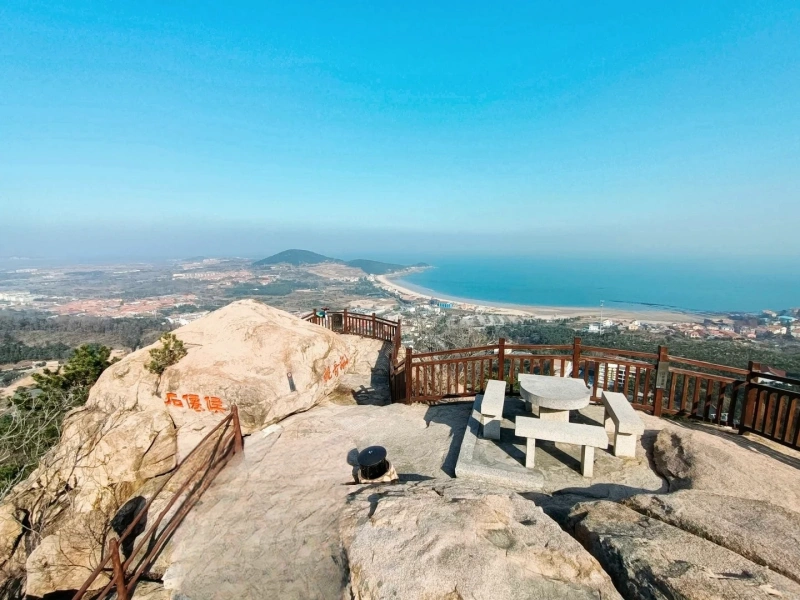
Huayan Scenic Area
The Huayan Scenic Area is a perfect blend of religious culture and natural splendor. Nestled on the eastern slope of Laoshan, this zone features picturesque streams, serene landscapes, and significant Buddhist heritage.
Huayan Temple
Located on the mid-slope of Mount Luoyan, Huayan Temple is the largest Buddhist temple in Laoshan. Its ancient architecture blends seamlessly with the surrounding natural beauty, creating a peaceful sanctuary for both spiritual seekers and nature lovers.
Dana Luoyan Cave
Upstream from Huayan Temple lies Dana Luoyan Cave, a natural grotto measuring 7 meters wide and over 10 meters high and deep. The cave’s sharp walls and volcanic-like opening at the top allow sunlight to filter in, creating an ethereal atmosphere. According to legend, this cave is where the Buddha Luoyan achieved enlightenment.
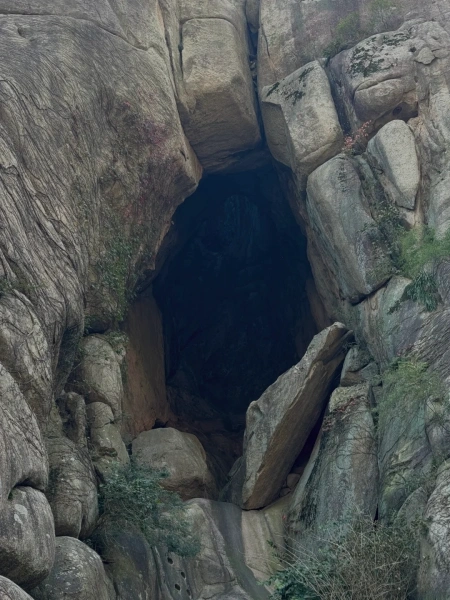
Jufeng Scenic Area
The Jufeng Scenic Area is the heart of Laoshan Mountain and offers some of the most challenging and rewarding hiking experiences. With its rugged peaks and awe-inspiring vistas, it provides visitors with a firsthand experience of Laoshan’s grandeur.
Jufeng (Laoshan Peak)
Jufeng, also known as “Laoshan Peak,” is the tallest point of Laoshan Mountain, standing at 1,132.7 meters above sea level. It holds the title of the highest peak along China’s coastline. This area is famous for its “Four Wonders”:
- Sunrise at Jufeng
- Sea of Clouds
- Laoshan Fireball
- Buddha’s Light
The summit consists of a cluster of rocky formations, approximately 100 meters high and spanning 600 meters. It’s a paradise for those seeking panoramic views and breathtaking photo opportunities.
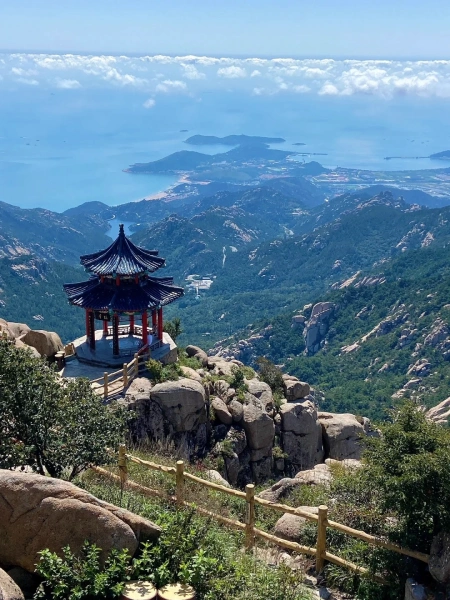
Jiushui Scenic Area
The Jiushui Scenic Area is celebrated for its water features, lush greenery, and tranquil valleys. Named after its nine streams, this zone is ideal for those who love waterfalls, streams, and the soothing sounds of nature.
Chaoyin Waterfall
Chaoyin Waterfall, also known as the Fish Scale Waterfall, is the highlight of Jiushui Scenic Area. Located at the end of the nine streams, this waterfall earns its name from its wave-like flow and roaring sound, reminiscent of ocean tides.
- The waterfall cascades down in three stages:
- The first drop is approximately 6 meters.
- The second drop is about 5 meters.
- The third drop plunges 10 meters, forming a spectacular 5-meter-wide curtain of water that flows into a crystal-clear pool below.
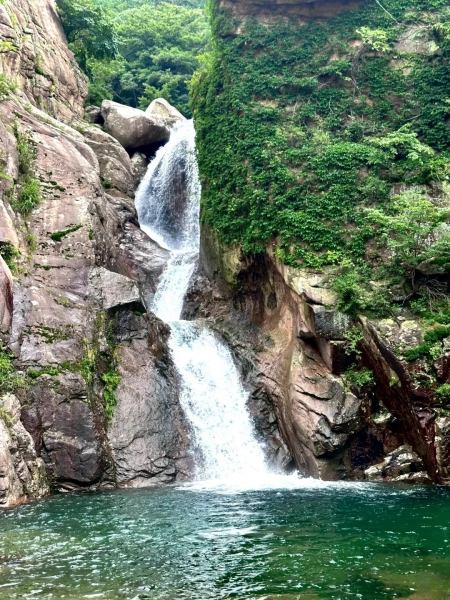
Laoshan Ticket Guide
If you only have one day to explore, it is recommended to visit the Taiqing, Huayan, and Yangkou scenic areas by purchasing the Taiqing Line ticket. For a two-day trip, you can add the Jufeng Scenic Area with a combination ticket for the Taiqing and Jufeng Lines. If you plan to spend three days, consider visiting the Jiushui Scenic Area and getting the comprehensive Laoshan All-Inclusive Ticket.
Laoshan Ticket Prices
- Taiqing Line (Recommended)
- Includes: Taiqing Scenic Area, Huayan Scenic Area, Yangkou Scenic Area tickets, and unlimited shuttle bus rides.
- Validity: 2 consecutive days after ticket validation.
- Price:
- Adults: 120 RMB
- Children/Students: 75 RMB (ages 7–18 or university undergraduates)
- Seniors: 15 RMB (ages 60+)
- Free Admission: Children under 6 years old or under 1.4 meters tall.
- Ticket Purchase: Trip.com Discounts
- Jufeng Line
- Includes: Jufeng Scenic Area ticket and unlimited shuttle bus rides.
- Validity: 1 day only.
- Price:
- Adults: 110 RMB
- Children/Students: 70 RMB (ages 7–18 or university undergraduates)
- Seniors: 15 RMB (ages 60+)
- Free Admission: Children under 6 years old or under 1.4 meters tall.
- Laoshan All-Inclusive Ticket
- Includes: Taiqing, Jufeng, Huayan, Yangkou, and Jiushui Scenic Areas tickets, along with unlimited shuttle bus rides.
- Validity: 3 consecutive days after ticket validation.
- Price:
- Adults: 200 RMB
- Children/Students: 130 RMB (ages 7–18 or university undergraduates)
- Seniors: 30 RMB (ages 60+)
- Free Admission: Children under 6 years old or under 1.4 meters tall.
- Opening Hours:
- April to October: 6:00 AM – 7:00 PM
- November to March: 7:00 AM – 5:00 PM
Ticket Purchase Options
- Online: Via official WeChat accounts or other booking platforms
- Ticket Purchase: Trip.com Discounts
- Offline: At Visitor Service Centers.
Recommended Routes in Laoshan
Laoshan Mountain features five major scenic areas, each offering unique attractions and activities. Yangkou is perfect for climbing with ocean views, Jiushui is ideal for enjoying waterfalls and streams, Taiqing focuses on Taoist culture, Huayan highlights Buddhist heritage, and Jufeng offers a thrilling climb to the mountain’s summit. Due to the size of Laoshan, it’s advisable to focus on one or two scenic areas per day.
One-Day Route: Taiqing Line
- Start at the Dahedong Visitor Center and take the shuttle bus to Taiqing Square.
- Hike to Taiqing Palace (admission: 27 RMB). This Taoist temple is highly recommended for first-time visitors.
- Take the shuttle bus to the Taiqing Cableway. Follow the signs to Yako (Pass)–Qingshan Fishing Village, where you can capture stunning panoramic views of the village.
- Return to Yako Transfer Center and take the shuttle bus to Yangkou. Begin your hike, which takes 1–1.5 hours to reach the summit of Tianyuan Peak, passing Wanshou Peak along the way. Spend time enjoying the breathtaking views of Qingdao and the surrounding ocean.
- Descend to visit Taiping Palace and Lion Peak. Allocate 2–4 hours here.
- Take the shuttle bus to Huayan Scenic Area. Follow the signs uphill to visit Huayan Temple. If you have limited energy or time, you can admire the temple from the gate. For those with more time, explore Dana Luoyan Cave. Spend 1–1.5 hours here.
- Return to the Huayan Shuttle Parking Lot and head back to the Dahedong Visitor Center.
One-Day Hiking Route: Jufeng Line
- Start at the Dahedong Visitor Center and take the shuttle bus to the Tian Di Chun He Gate.
- Begin your hike following the route: Limen → Sea Mountain Inscription → Xunmen → Picking Stars Pavilion → Xiantian Bridge → Lingqi Peak → Zhenmen → Genmen → Kanmen → Jufeng Observation Deck → Five Peaks Immortal Pavilion → Ganmen → Dui Men → Chain Bridge → Kunmen.
- Descend via Zhuque Stone and return to the Limen Gate, completing the hike.
Recommended Local Dishes Near Laoshan
- Laoshan Tea: As one of China’s most famous green teas, Laoshan Tea thrives in the region’s unique natural environment. The cool climate, significant temperature differences between day and night, and pristine water contribute to its exceptional quality. Known for its light fragrance, refreshing sweetness, and lingering aftertaste, this tea brews to a vibrant green color with tender leaves. It’s a perfect souvenir for visitors.
- Laoshan Steamed Buns: These large, fluffy steamed buns are a local specialty, famous for their soft texture and rich wheat flavor. Made with high-quality flour and Laoshan’s pure underground water, the buns are a staple in the area. Pair them with local pickled vegetables or tofu for a true taste of Laoshan’s culinary culture.
- Sea Water Tofu: Sea Water Tofu is a signature dish of Laoshan, crafted using natural seawater from the region. Compared to regular tofu, it boasts a finer texture and a subtle ocean flavor. Whether steamed or cooked in soups, this tofu showcases a unique taste that is both fresh and savory.
- Mushroom Stewed Chicken: This hearty dish combines free-range chicken with wild mushrooms from the Laoshan mountains, slowly simmered in mountain spring water. The result is tender, juicy chicken with aromatic mushrooms in a clear, nourishing broth. It’s a comforting and energy-boosting meal, ideal after a day of hiking.
- Raw Laoshan Radish: Laoshan radishes are famous for their crisp texture, juicy bite, and natural sweetness. Thanks to the region’s fertile soil and favorable climate, these radishes stand out in flavor and crunch. Eating them raw offers a refreshing and light snack that also helps cleanse the palate.
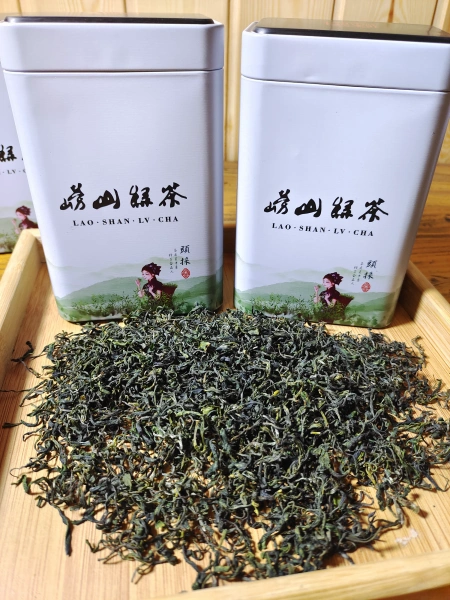
How to Get to Laoshan from Downtown Qingdao
Laoshan is located approximately 30 kilometers from downtown Qingdao. Visitors can choose from several convenient transportation options:
By Metro
The Qingdao metro system offers a budget-friendly and efficient way to reach Laoshan:
- Take Metro Line 11 and get off at Beizhai Station or Laoshan Station, both ideal transfer points for the main scenic areas.
- From the station, you can walk, take a bus, or hail a cab to reach popular spots like Taiqing Scenic Area or Jufeng Scenic Area.
By Bus
Several bus routes connect Qingdao’s downtown area with Laoshan:
- Route 104: Starts from Qingdao Railway Station, passing through busy areas like Taidong and Hong Kong Road, and heads directly to the Laoshan Scenic Area.
- Route 113: Departs from key downtown locations and terminates at Yangkou Scenic Area, with stops at multiple Laoshan entrances.
- Route 304: Provides direct access to Taiqing Scenic Area.
By Taxi or Ride-Hailing Service
Taxis and ride-hailing apps offer the most direct and convenient travel option:
- Cost: Approximately 80–120 RMB for a one-way trip.
- Duration: Around 40–60 minutes, depending on traffic.
How to Get to Laoshan from Qingdao Jiaodong International Airport
Located about 60 kilometers north of Laoshan, Qingdao Jiaodong International Airport is well connected by public and private transportation:
By Metro
The metro is an affordable and practical choice:
- Take Metro Line 8 from Jiaodong Airport Station to Aoti Center Station.
- Transfer to Metro Line 11 and alight at Beizhai Station or Laoshan Station.
- From there, continue your journey by bus or ride-hailing service to your desired scenic area (e.g., Taiqing Scenic Area or Yangkou Scenic Area).
- Duration: Approximately 2 hours.
- Cost: 15–20 RMB.
By Bus
Airport shuttle buses provide a convenient link to Laoshan:
- Take Airport Shuttle Bus Line 2 to Qingdao’s downtown (e.g., Wusi Square).
- From the city center, transfer to a local bus (e.g., Routes 104 or 113) to reach Laoshan Scenic Area.
- Duration: 2.5–3 hours.
- Cost: Around 30 RMB for the shuttle + 2–5 RMB for the city bus.
By Taxi or Ride-Hailing Service
Taxis and ride-hailing services are the fastest and most flexible option:
- Route: Directly from the airport to the main Laoshan entrances, such as Taiqing or Yangkou Scenic Area.
- Cost: Around 150–200 RMB one way.
- Duration: Approximately 1 hour.
FAQ
Is Laoshan Stroller-Friendly?
Some parts of Laoshan are suitable for strollers, but not all areas are convenient for their use.
- Stroller-Friendly Areas:
- Taiqing Scenic Area and Huayan Scenic Area: These zones have relatively flat terrain and wide paths, making them ideal for strollers.
- Shuttle Bus Stops: Many shuttle stations feature paved and accessible walkways.
- Not Stroller-Friendly Areas:
- Yangkou Scenic Area and Jufeng Scenic Area: These areas involve steep climbs and stairs, making stroller use impractical.
- Jiushui Scenic Area: The natural trails here are uneven and may pose challenges for strollers.
Tip: Opt for a lightweight and foldable stroller and consider using a baby carrier in steeper sections.
Where Can I Store Luggage?
- Inside Ticket Halls: Free manual luggage storage is available at the service centers within the ticket halls. There are no restrictions on the number of items.
- Outside Ticket Halls: Self-service lockers are also available for a small fee, and users can store items by scanning a QR code.

 English (US)
English (US)  English (Hong Kong)
English (Hong Kong)  English (Malaysia)
English (Malaysia)  English (Singapore)
English (Singapore)  繁體中文
繁體中文 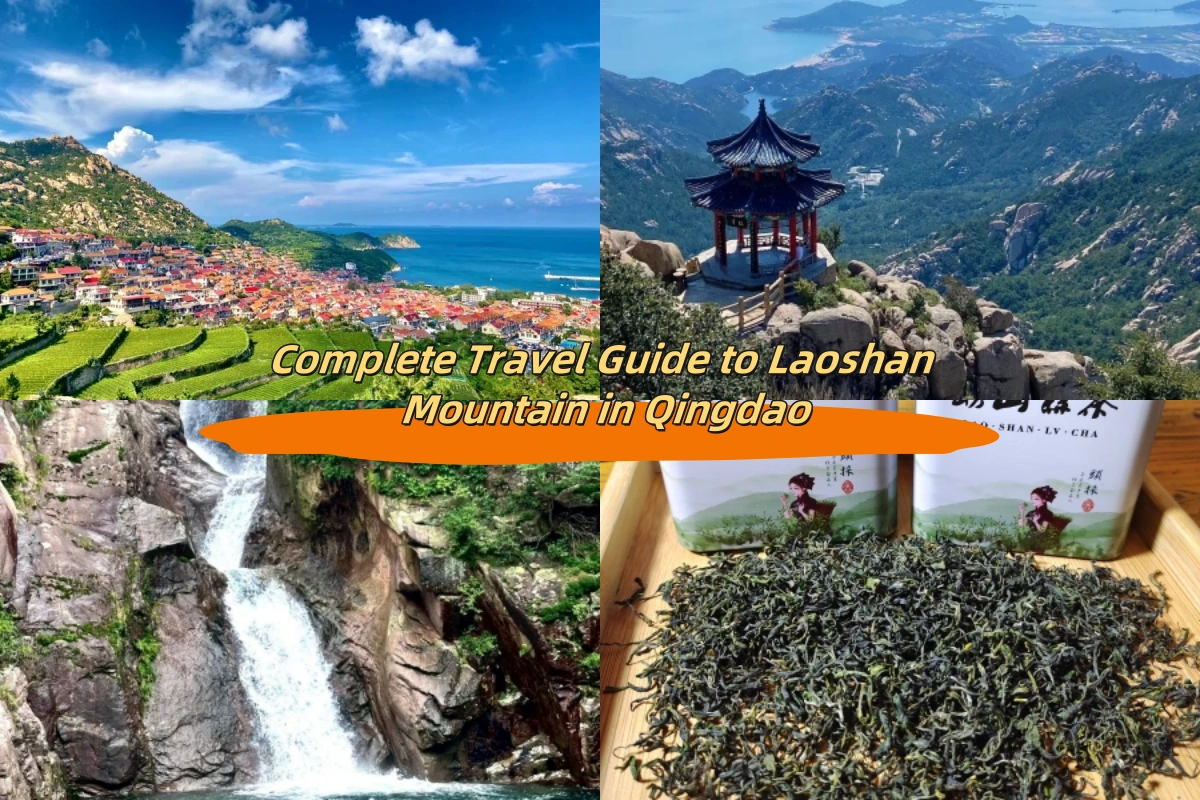
Comment (0)